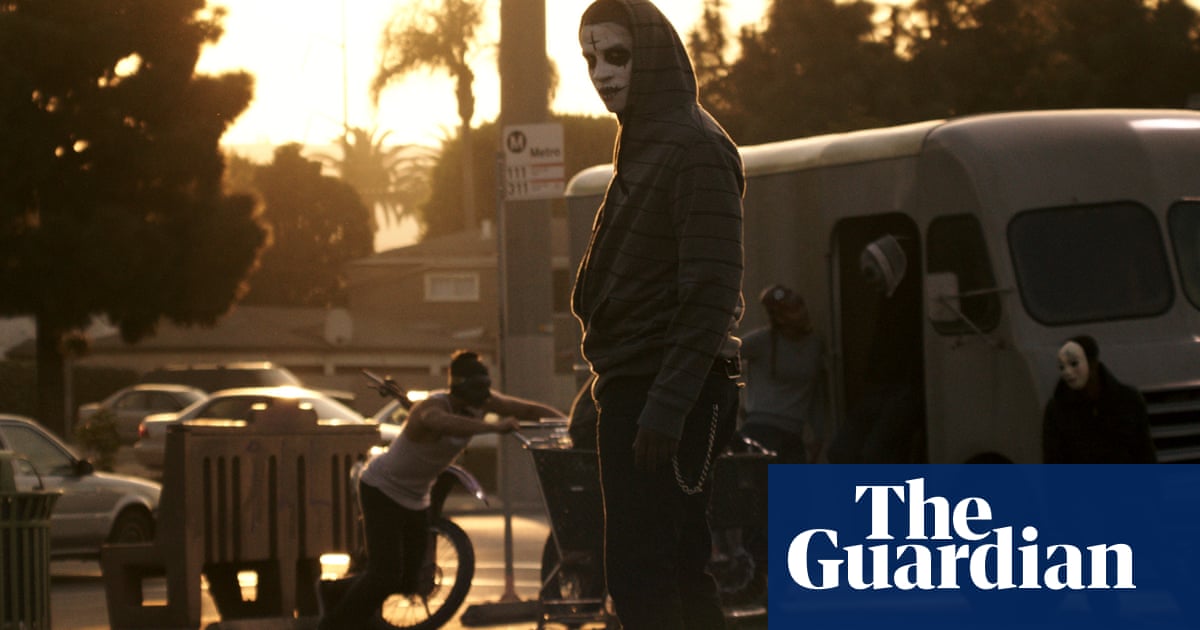
It’s gotten rather tricky to calibrate the the annual relative quotient of tragedy. (For the future reference of misery-focused sociologists, that’s the ARQT.) 2021 was a year of tribulation closing out with a backslide into the same rampant viral spread that we saw in square one of the pandemic that just won’t end – but hey, at least it’s not 2020 any more. As it becomes apparent that we will have to accept a few massive catastrophes as the new status quo, assessing the quality of life turns into a matter of degrees, weighing each fresh stretch of hardship against the last. It may prove some cold comfort to note that things have, by sheer numbers, gotten slightly better since last year. The corollary to this way of thinking, however, is the understanding that our circumstances can always get worse.
Just take a look at the films set in the year 2022, united as they are in agreement that something horrible is just waiting to happen. There’s a futuristic sheen to the number, as if a robot’s stuttering while giving a readout of two, that’s compelled a handful of film-makers to select this date as the point at which a major crisis comes to pass. Whether it’s a chance armageddon landing at an inopportune time or a boiling-over that our species has been building to for years, the movies have marked 2022 as cursed. The only hope as we approach the beginning of another year is that whatever challenges await us, they won’t have the terrible finality of the world-enders listed below. Read on for a smorgasbord of possible apocalypses imagined for the coming months, and take some solace in the small consolation that we have yet to start eating each other:
The Dark Side of the Moon
Way before Carey and Chad Hayes made their name by writing 2013’s The Conjuring, the twin brothers scripted this direct-to-video cult classic about a crew of astronauts venturing into a galactic no man’s land. They’ve entered the void of low orbit to repair a nuclear-arming satellite, but a power failure sends them floating helplessly toward a long-defunct Nasa shuttle they board in search of aid. The game of cat-and-mouse that follows is too weird in its particulars to be dismissed as the Alien rip-off it appears to be; the reanimated corpse and the leather dominatrix robot prime us for the grand reveal that the stalker picking off the explorers is actually Satan himself. (Turns out this station is hovering above the Bermuda Triangle.) As unfortunate turns of events go, this one isn’t so bad, by its very nature contained and remote. If the devil does turn out to be one of next year’s primary antagonists, we should be so lucky to keep him stuck in outer space.
Soylent Green
Soylent Green, as you may already be aware through sheer cultural osmosis, is people. In Richard Fleischer’s infamous sci-fi thriller, the NYPD detective Frank Thorn gets the ultimate validation for his paranoia about the miracle foodstuff mass-produced by a shadowy corporation, for which the magic ingredient just so happens to be the finely ground corpses of the underclass. The screenwriter Stanley Greenberg (and Harry Harrison, author of the novel Make Room! Make Room!, which inspired the film) was right on the money in his vision of an economy stratified by scarcity, as overpopulation, pollution, and an eerily prescient climate cataclysm exacerbate hunger and poverty. That said, we haven’t yet resorted to devouring each other – that seems to be the one taboo that’s going to hold up through any and all mounting desperation – but we’re not so far off from Snowpiercer’s future of nutrient-rich sustenance bars made from mashed cockroach. Once we’ve cleaned out the global cupboards of actual food, we’ll have no choice but to turn to that which is merely edible.
The Tomorrow War
This past summer’s straight-to-streaming Chris Pratt vehicle didn’t make quite the splash a producer might hope for from a $200m budget, but it’s built around an idea with deep resonance in the present day: that it falls to those living now to anticipate and negate the conflicts that will face the next generation. In 2022, emissaries from the year 2051 materialize with a warning of an impending alien invasion twenty-six years down the road and beg for the help of the present-day armed forces to time-travel ahead so they can help beat back the extraterrestrial menace. Pratt’s Green Beret-turned-super-soldier gets the drop on the beasts dubbed “Whitespikes” only to discover that to completely purge the Earth of these hostiles, he’ll have to return to his own time and act then. (It’s worth noting that the aliens were actually submerged in a glacier and released by the thaw of global warming.) Goes to show that the old saying is right – an ounce of prevention is worth a pound of full-bore military offensives.
The Purge
When the lucrative spec-fic horror franchise first launched with this flagship film, 2022 was far away enough to allow for acclimation to an unthinkable way of life. The survival nightmare takes place after eight successful observances of the Purge, the annual holiday during which all crime is legal, allowing America to release its pent-up rage and chill out for 364 days of the year. Though this series has yet to realize the full disturbing potential of its ingenious premise, its name has been invoked to describe real-life goings-on with greater frequency as of late. During the run-up to the 2020 election, Donald Trump’s favorite scaremongering tactic was to paint a picture of Joe Biden’s America as a lawless hellscape where marauding gangs sowed mayhem with impunity. In actuality, the tenor of unrest is almost the exact opposite of that articulated in the film: rather than the barely repressed bigotry fueling the Purge onscreen, the demonstrations of destruction during protests were motivated by demands for justice.
No Escape
Martin Campbell’s juiced-up B-movie taps a peak-form Ray Liotta for the ex-marine John Robbins, a man imprisoned for the murder of his commanding officer back in Benghazi. He’s sent to the island penal colony of Absolom, where the worst of the worst have been left to their own murderous devices and divided themselves into the warlike, savage Outsiders and the civilized, humane Insiders. The miniature revolution led by Robbins didn’t have all that much insight to shed on the carceral-state debate at the time of its release, but today, it looks like a comically outsized take on a real issue. Its guiding principle that inmates are robbed of their dignity by a system that treats them like easily exploited chattel holds true, if anything rendered more impactful by the advances in public understanding of this sorry situation. We can only hope that we’ll have as noble a leader as the character actor Lance Henriksen to expose the treatment festering in the prison-industrial complex.
Geostorm
Well, the good news is that we haven’t implemented the use of widespread weather-control satellites just yet, so annihilation-level inclement conditions on a global scale may not be on the cards. That’s the armageddon facing the human race in Dean Devlin’s admirably dumb eco-spectacle, in which the space cowboy Gerard Butler represents our last line of defense against certain death by Mother Nature. The opening salvos before the much-feared main event giving this film its title are bad enough, ranging from skyscraper-drowning typhoons to torrential downpours of lightning singeing city blocks to a crisp. It’s all a bit store-brand Roland Emmerich in the awed-eyed photography, but natural events of biblical ruin are growing regrettably commonplace. Even if Butler cuts a larger-than-life figure, the threat he faces still speaks to a legitimate fear many of us contend with every time we open a newspaper. His character and his power to stop doomsday is a reassuring fiction, the one man who can change an obliteration the rest of us are helpless to halt.












